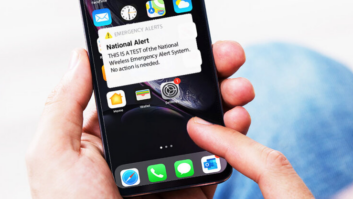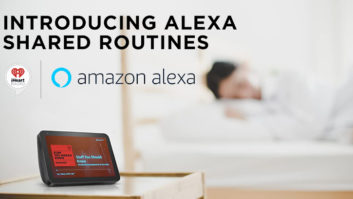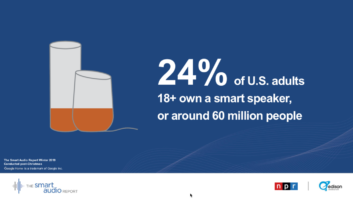 About one quarter of the U.S. population — 60 million adults 18 and older — now own a smart speaker. That’s according to the winter 2019 edition of The Smart Audio Report from NPR and Edison Research, released this month.
About one quarter of the U.S. population — 60 million adults 18 and older — now own a smart speaker. That’s according to the winter 2019 edition of The Smart Audio Report from NPR and Edison Research, released this month.
Consumers also appear to be doubling down on the technology, quite literally: as of December 2019, there are more than 157 million smart speakers in the U.S., representing a 135% increase from last year’s accounting and more than double the number found just two years prior. U.S. households now average more than two of these devices.
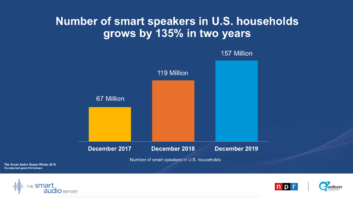 As the devices proliferate, smart speakers are more entrenched in daily life. Smart speaker owners 13 years old and up now say they choose smart speakers for a lot of their listening. Mobile devices remain the most popular (31%), followed by traditional radio receivers (19%), with smart speakers closely on their heels (17%). Smart speaker owners also tend to be power users, deploying it multiple times daily.
As the devices proliferate, smart speakers are more entrenched in daily life. Smart speaker owners 13 years old and up now say they choose smart speakers for a lot of their listening. Mobile devices remain the most popular (31%), followed by traditional radio receivers (19%), with smart speakers closely on their heels (17%). Smart speaker owners also tend to be power users, deploying it multiple times daily.
Voice commands are also becoming a common activity. More than half of U.S. adults have told their devices to do something (how many have succeeded may be another matter), and 24% say they use voice commands on a daily basis.
CONTENT SOURCES AND CHOICES
And when consumers choose smart speakers for their audio, streaming audio dominates nearly half of listening time. It’s worth noting that Amazon accounts for 15% of the audio sourcing — likely due to its association with the Alexa smart device. On the other hand, Google’s own audio offerings don’t track with the popularity of its Google Home.
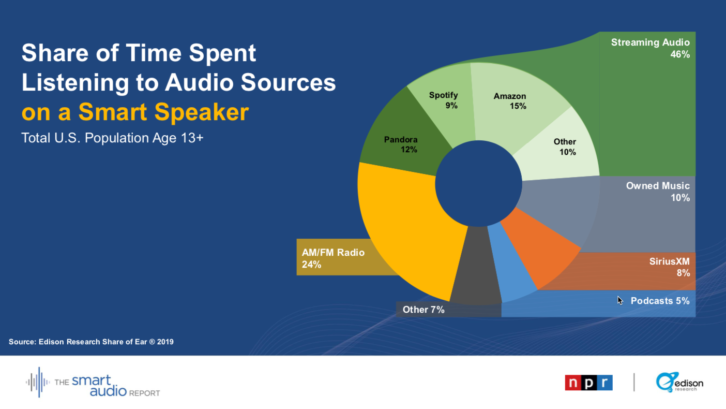 However, AM/FM radio is also actually the most popular audio source for smart speakers at 24%. It’s chosen at more than twice the rate consumers play Pandora, Spotify or owned music. That’s also up significantly from the prior year, when AM/FM only clocked in 18% of listening on smart speakers.
However, AM/FM radio is also actually the most popular audio source for smart speakers at 24%. It’s chosen at more than twice the rate consumers play Pandora, Spotify or owned music. That’s also up significantly from the prior year, when AM/FM only clocked in 18% of listening on smart speakers.
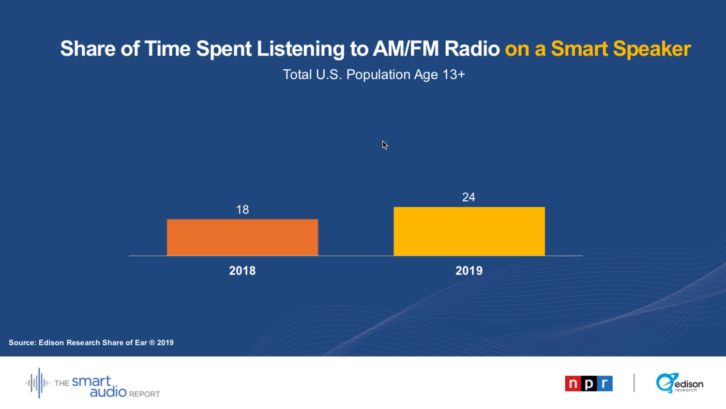 Podcasts remain a minority in this space, but spoken word content generally is on the upswing for smart speaker listeners. It’s up 20% since 2014, while music listening has dropped by 5% during the same period. (It’s unclear whether the report separated podcasts played via Spotify, a popular platform for that content, or if it double-counted it.)
Podcasts remain a minority in this space, but spoken word content generally is on the upswing for smart speaker listeners. It’s up 20% since 2014, while music listening has dropped by 5% during the same period. (It’s unclear whether the report separated podcasts played via Spotify, a popular platform for that content, or if it double-counted it.)
